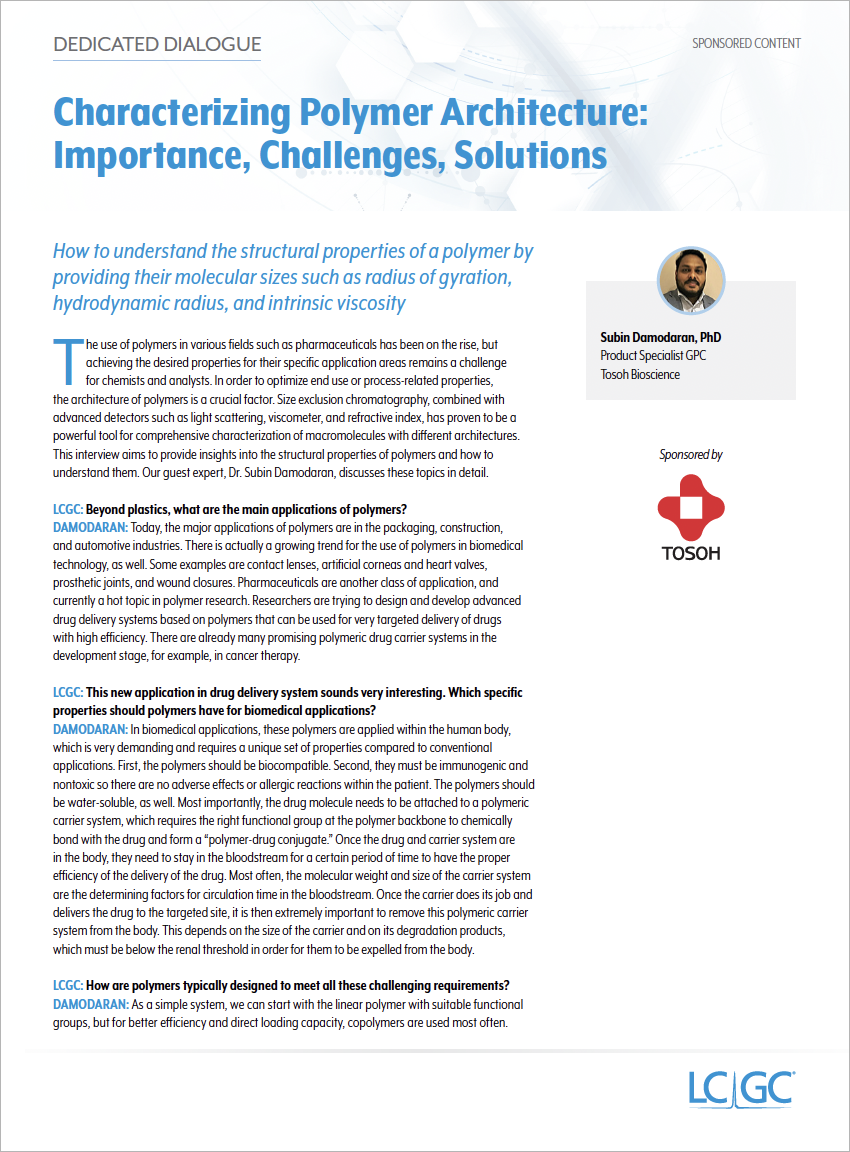Characterizing Polymer Architecture: Importance, Challenges, Solutions
Polymers are gaining more attention in many new fields such as pharmaceutical applications. However, optimizing the final properties of the polymers associated with these new application areas is challenging for chemists and analysts. Polymer architecture plays a crucial role to optimize the end use or process-related properties. Size exclusion chromatography in combination with advanced detectors such as light scattering, viscometer, and refractive index is a powerful tool for the comprehensive characterization of macromolecules with various architectures. In this podcast, Dr. Subin Damodaran will explain how to understand the structural properties of a polymer by providing their molecular sizes such as radius of gyration (Rg ) and hydrodynamic radius (Rh), and intrinsic viscosity.
Investigating the Protective Effects of Frankincense Oil on Wound Healing with GC–MS
April 2nd 2025Frankincense essential oil is known for its anti-inflammatory, antioxidant, and therapeutic properties. A recent study investigated the protective effects of the oil in an excision wound model in rats, focusing on oxidative stress reduction, inflammatory cytokine modulation, and caspase-3 regulation; chemical composition of the oil was analyzed using gas chromatography–mass spectrometry (GC–MS).
Evaluating Natural Preservatives for Meat Products with Gas and Liquid Chromatography
April 1st 2025A study in Food Science & Nutrition evaluated the antioxidant and preservative effects of Epilobium angustifolium extract on beef burgers, finding that the extract influenced physicochemical properties, color stability, and lipid oxidation, with higher concentrations showing a prooxidant effect.
Rethinking Chromatography Workflows with AI and Machine Learning
April 1st 2025Interest in applying artificial intelligence (AI) and machine learning (ML) to chromatography is greater than ever. In this article, we discuss data-related barriers to accomplishing this goal and how rethinking chromatography data systems can overcome them.




